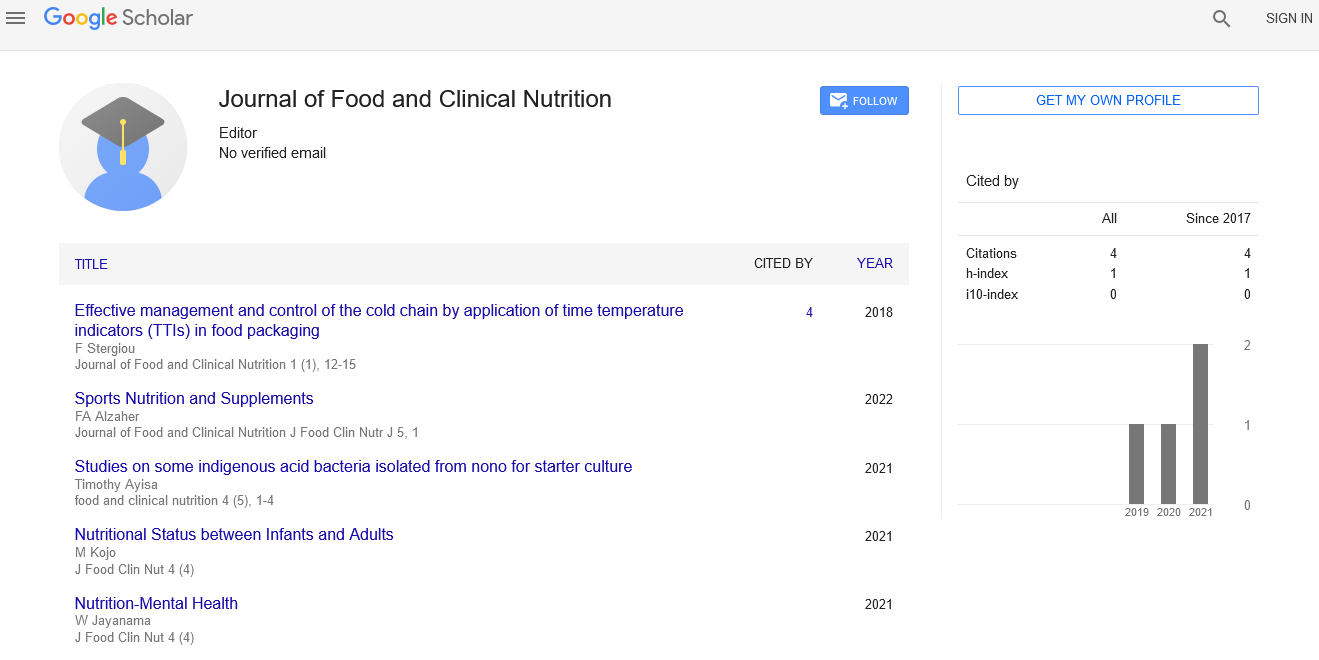nutritional management of individuals with obesity
Received: 02-Apr-2024 Editor assigned: 05-Apr-2024 Accepted Date: Apr 25, 2024; Reviewed: 08-Apr-2024 Revised: 11-Apr-2024 Published: 30-Apr-2024
Citation: Westmaccot M (2022) Nutritional Management of Individuals with Obesity. J Food Clin Nut Res. 4(4):1.
This open-access article is distributed under the terms of the Creative Commons Attribution Non-Commercial License (CC BY-NC) (http://creativecommons.org/licenses/by-nc/4.0/), which permits reuse, distribution and reproduction of the article, provided that the original work is properly cited and the reuse is restricted to noncommercial purposes. For commercial reuse, contact reprints@pulsus.com
Introduction
Obesity is a metabolic sickness that has arrived at scourge extents. The World Health Organization (WHO) has proclaimed corpulence as the biggest worldwide on going medical issue in grown-ups which is progressively transforming into a more significant issue than unhealthiness. Weight is a door to infirmity, and it has become one of the main sources of disability and death, affecting not only grown-ups as well as kids and teenagers around the world. In 2014, almost more than 1.9 billion adults were bulky. Of these more than 600 million were obese. 42 million youngsters under the age of 5 were overweight or corpulent in 2013. The WHO world wellbeing insights report in 2015 shows that in the European district the general corpulence rate among grown-ups is 21.5% in guys and 24.5% in females. A similar report expresses that the pervasiveness for overweight among youngsters at the age of 5 is 12.4%. It has been additionally projected that 60% of the total populace, for example 3.3 billion individuals, could be overweight (2.2 billion) or corpulent (1.1 billion) by 2030 if late patterns proceed.
Description
Meal Planning is the utilization of food varieties, nutrition classes and supplements to work with varieties for individual/bunch inclinations, social propensities, wellbeing status and financial variables to accomplish special objectives. It is an intelligent cycle between the customer and the medical services supplier. Meal planning is a point of convergence in the administration of corpulence, diabetes and hypertension. The meal planning measure requires input from the customer, including monetary, strict and social contemplations. Motivation behind feast arranging is to control weight, pulse as well as blood glucose and to guarantee that the right kinds and measures of food are eaten and controlling the particular supplements that are suitable to the designated illness and generally speaking to work on by and large personal satisfaction. The standards which administer meal planning incorporates healthful sufficiency, caloric control and supplement thickness. The meal plan ought to be assessed intermittently and changed if important to accomplish the objectives of further developed infectious prevention and general great wellbeing.
Albeit hereditary elements add to obesity, the expanded commonness of this condition during the last century (especially over the most recent thirty years) affirms that natural elements assume a significant part. The Western eating regimen, which gives exceptionally attractive, energy-thick food sources wealthy in fat and sugar, is helpful for weight acquire. These food sources initiate reward frameworks in the mind, up-manage the statement of craving signals, and obtuse the reaction to satiety signals, advancing overconsumption. Common short-term restrictive diets regimens that emphases on restricting part sizes or calories seldom produce long haul weight reduction and may have malicious wellbeing impacts. A superior methodology is an extremely durable change in the sort of food varieties people select and in the active work they remember for their schedules. People who devour food sources lower in energy thickness and higher in water and fiber (e.g., mixed greens, soups, vegetables, and organic products), rather than food sources high in energy thickness, experience early satiety and unexpectedly decline food consumption. This system has delivered weight reduction in a few clinical investigations. By taking into consideration the admission of bigger bits that give satiety, it encourages preceded with adherence.
Conclusion
Obesity adds to numerous constant sicknesses, however it very well might be forestalled and effectively treated in many people through an eating routine low in fat and basic sugar and high in fiber, alongside ordinary active work. All around arranged, low-fat veggie lover and vegan eats less carbs are especially stimulating and powerful. Specific consideration ought to be set to screen, forestall and treat hunger in people with heftiness and more established age, just as those with polymorbidity in both outpatient and hospitalized settings, with explicit signs for ICU.





